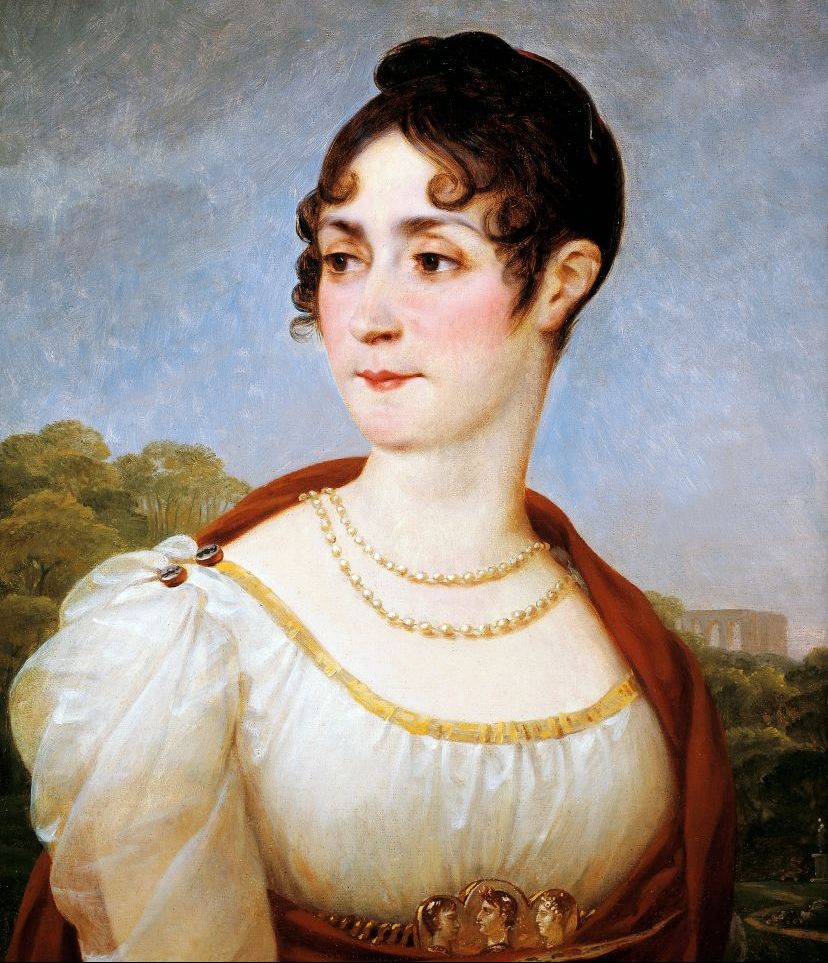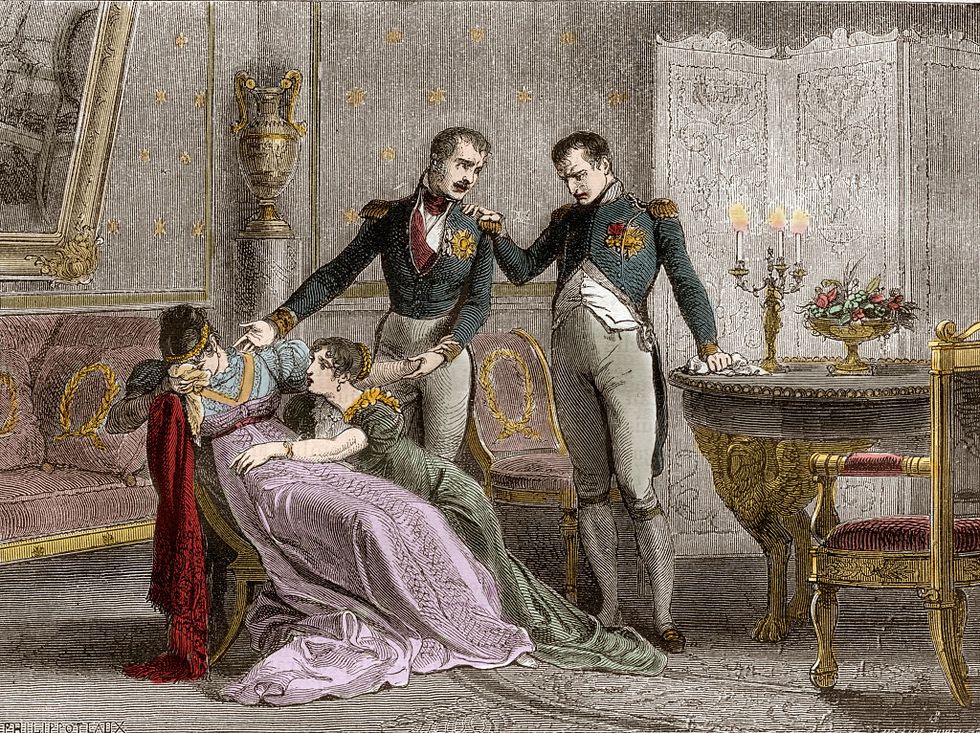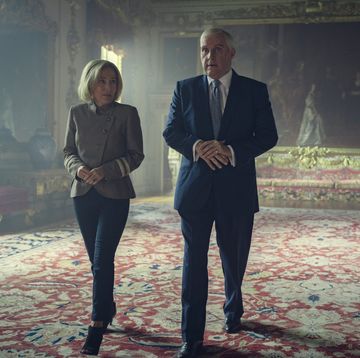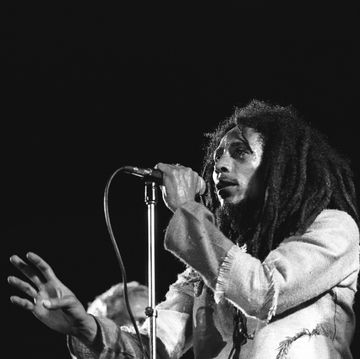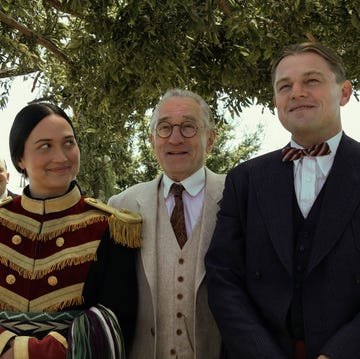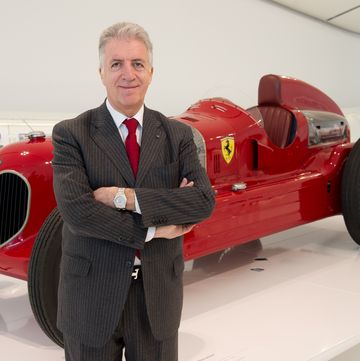In many ways, the marriage of Napoleon and Josephine Bonaparte from 1796 to 1809 mirrored the tumultuous time in which they became emperor and empress of France. More than 200 years later, their unexpected rise to power during the turn of the 19th century became the subject of director Ridley Scott’s 2023 biopic Napoleon.
Now streaming on Apple TV+, the movie stars Joaquin Phoenix as the infamous military commander Bonaparte and Vanessa Kirby as Josephine, his first wife. As the name implies, Napoleon focuses heavily on Bonaparte’s own legacy, from his early success on the battlefield to his eventual downfall and exile.
However, his 13-year union with Josephine was compelling in its own way, as well as a key part of the famed leader’s life and the new movie. Among other things, the couple argued over money and experienced a prolonged struggle to produce an heir. Ultimately, these hardships drove them apart and led them both to rather unsatisfying fates.
Josephine had a humble upbringing
More than three decades before she met and received her now famous name from Napoleon, Josephine was born Marie-Joseph-Rose Tascher de la Pagerie on June 23, 1763, on the Tros-Îlets plantation in Martinique (the eastern Caribbean island is now a formal French territory overseas). Originally called Rose for short or affectionately Yeyette, she was the eldest daughter of Joseph Gaspard de Tascher, a sugar planter, and Rose-Claire Des Vergers de Sannois.
According to Ernest John Knapton’s 1963 book Empress Josephine, the future empress resided with her family in the plantation’s sugar refinery after a hurricane destroyed their home and killed 440 people in 1766. Despite her unremarkable home, Josephine enjoyed island life and the colorful birds and plants that surrounded her.
When she was 10 years old, her parents sent her to a convent in the capital city of Fort-de-France to receive an education. They weren’t concerned about their daughter’s own enrichment but rather wanted to make her a suitable partner for marrying into a rich family. In December 1779, that plan came to fruition when Joseph escorted a 16-year-old Josephine to France for her marriage to Alexandre de Beauharnais.
The couple lived in the Paris suburbs and had two children: a son named Eugéne in 1781 and a daughter named Hortense in 1783. However, their relationship quickly soured, and they separated in 1785, with Josephine eventually taking her daughter back to Martinique and Alexandre taking custody of Eugéne.
Josephine met Napoleon after avoiding the guillotine
Josephine returned to France with Hortense in 1790 following the start of the French Revolution and a related slave revolt in Martinique. There, she reconnected with Alexandre, as they never officially divorced. He was a successful politician by this time and rose to lead the Constituent Assembly in 1791 before assuming a leadership position in the army.
Three years later, he and Josephine were both arrested amid the Reign of Terror. He was executed by guillotine, and Josephine awaited her death as well. Luckily, she was spared following the overthrow and execution of Maximilien de Robespierre.
Left with no income and two children to care for, Josephine found a friend in socialite Thérésa Cabarrus. The latter introduced Josephine to an aspiring general named Napoleon Bonaparte at a party in 1795. While he was quickly smitten and proposed by January 1796, Josephine didn’t exactly give a glowing endorsement of her new beau—pointing out he was “silent and awkward with women” as well as “altogether strange in all his person.”
However, she ultimately saw the social and financial advantages Napoleon’s growing prestige could provide and agreed to his proposal. They were married in a civil ceremony on March 9, 1796, but the honeymoon would have to wait. Two days later, Napoleon departed for his first military campaign through Italy.
Infidelity and family tension marked their marriage
Although Josephine benefitted financially from her husband’s conquests on the battlefield, their long separations produced immediate tension in the relationship. Both she and Napoleon engaged in extramarital affairs, and Napoleon had at least two children out of wedlock by 1810.
Josephine also spent money freely, angering Napoleon. She threw lavish parties at the Tuileries Palace and built a wardrobe of the finest clothes. In 1799, she purchased their Malmaison home near Paris and transformed it with beautiful rose gardens and exotic animals like kangaroos and ostriches. Although Napoleon often confronted Josephine over their bills, her charm and public perception ultimately assuaged him. “I win battles, but Josephine wins hearts,” he said.
Still, despite their trysts and disagreements, it’s clear Napoleon cared for Josephine very much. He lamented their lack of correspondence in his letters from the battlefield. “I cannot even drink a cup of tea without cursing the glory and the ambition which keep me apart from the soul of my existence,” he once wrote.
Napoleon also attempted to unite the Bonaparte and Beauharnais families, adopting Eugéne and allowing his brother Louis to marry his stepdaughter Hortense. At his coronation as emperor in 1804, he insisted on being the one to crown his wife empress—a public show of support in the midst of mounting pressure from his own relatives to split with Josephine.
Josephine couldn’t give Napoleon an heir
The resentment of the Bonaparte family stemmed primarily from Josephine’s inability to bear them children and, thus, an heir. Knowing it could ultimately lead to the end of their marriage, she felt this burden as well.
According to O&G Magazine, a desperate Josephine traveled to the spa town of Plombières in modern day Belgium in 1798 at the suggestion of Napoleon’s doctor. Her sister-in-law had done the same and became pregnant with a daughter after six years of infertility. But despite multiple visits, Josephine never experienced such a reversal of fortune.
Once Napoleon was crowned emperor in 1804, he also grew more impatient with her infertility. Finally in November 1809, he informed his wife of his desire for a separation. Josephine begrudgingly agreed, and their marriage was officially annulled weeks later on December 15.
Despite their often contentious union, Napoleon promised to safeguard Josephine’s future. “I want her to keep the rank and title of empress, but I definitely do not want her to doubt my feelings and want her always to consider me as her best and dearest friend,” he said, according to the Foundation Napoleon.
Josephine settled down for good at Malmaison, making improvements to the house, tending to the gardens, and expanding her art collection.
Josephine and Napoleon cared for each other until death
According to PBS, Napoleon, now about 40 years old, immediately began searching for a new wife. His ideal candidate was Anna Pavlovna, the 15-year-old sister of Russian Tsar Alexander I. But after his proposal was met with delays and excuses, he instead chose Archduchess Marie-Louise of Austria due largely to political motivations. Despite the 19-year-old Marie-Louise’s initial fears and objections—she wrote in her diary that simply seeing Napoleon would be “the worst form of torture”—she married him in a civil ceremony in April 1810.
Within a year, Marie-Louise gave birth to an heir, Napoleon II, who received the title king of Rome. Still, Napoleon kept his promise to Josephine, continuing to write her letters and sometimes showing up unannounced to see her—sparking jealousy in his new wife.
At Malmaison, Josephine followed the deteriorating state of her ex-husband’s rule, with Russia and its allies invading France in 1814. She didn’t see Napoleon before he went into exile following Paris’ quick surrender.
She also didn’t live to see much of the aftermath. She died from pneumonia at age 51 on May 29, 1814. According to Kate Williams’ book Ambition and Desire: The Dangerous Life of Josephine Bonaparte, her maid believed she “died of grief” over Napoleon’s fall.
Napoleon shortly returned to power in 1815 but was quickly exiled again—this time by the British—to the remote island of Saint Helena that same year. There he surrounded himself with photos of Josephine, even eating off plates with her likeness on them. He apparently thought of her up until his final moments, uttering her name as his final word before his death on May 5, 1821.
Although their relationship was flawed in many ways, it’s clear Napoleon and Josephine developed a mutual fondness that outlasted their marriage—making their eventual fates all the more tragic.
Watch Napoleon Now on Apple TV+
Co-star Vanessa Kirby expressed her enthusiasm for being able to tell Josephine’s story on the big screen. “It was difficult in many ways to be the feminine in that extremely masculine world, and she did such an amazing job of remaining dignified to the end,” she told Variety.
Watch Joaquin Phoenix and Kirby’s unique interpretation of the infamous couple—and all their ups and downs—now that Napoleon is streaming on Apple TV+ and available to buy through Prime Video and Vudu.
Tyler Piccotti first joined the Biography.com staff as an Associate News Editor in February 2023, and before that worked almost eight years as a newspaper reporter and copy editor. He is a graduate of Syracuse University. When he's not writing and researching his next story, you can find him at the nearest amusement park, catching the latest movie, or cheering on his favorite sports teams.

